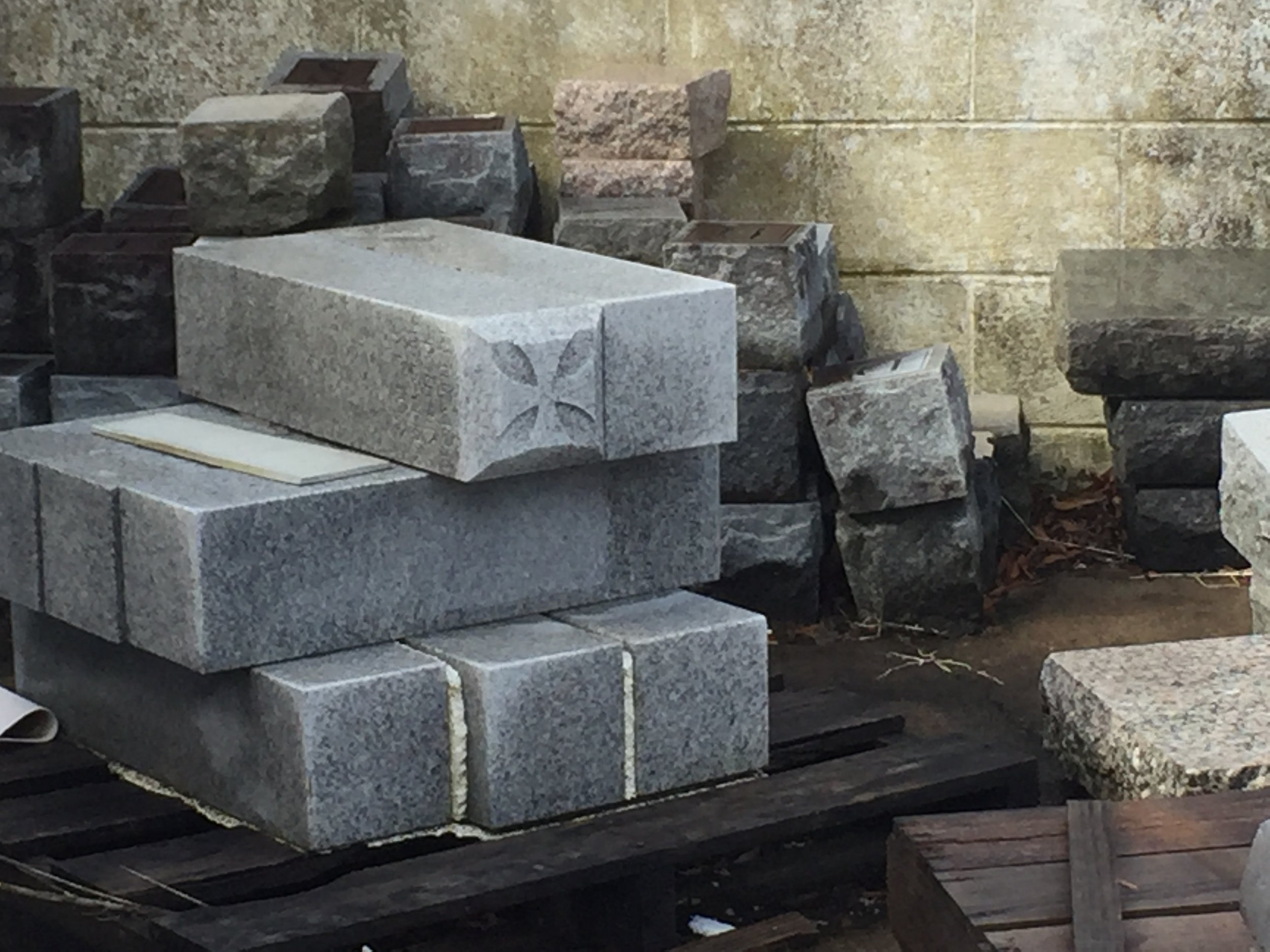Pure Georgia Gray Granite
Connie and I submitted our design, it was accepted: footstones of pure Georgia gray granite. We ordered 25 from Everlasting Granite Co. of Elberton, Ga.,cut from their nearby quarry. They shipped 30. The cost amounted to a virtual donation on their part. Each measures 2 feet long, 6 by 6 inches square. They were received and stored in Richmond, Va. by Mr. Tony Grappone of A. P. Grappone & Sons, who did the lettering.
Each stone then went across town to Empire Marble & Granite to have the shoulders beveled, and back to Grappone for the top relief to be cut away for the characteristic Smith symbol, the formy cross. These costs too amounted to a virtual donation.
Many have asked if Smith’s policy of meticulous detail in regard to what he had seen and not seen was shared by other explorers. Was the man so often called a vainglorious braggart and outright dissembler alone in this level of precision? Most of his second-hand mapping was based on information from the local Indian tribes to be sure.
But Smith’s crosses stop short of areas explored by other Englishmen. The answer is that no one else did this, to my knowledge—neither Ralph Lane nor Samuel de Champlain nor Hernan de Soto, nor his fellow colonists Newport and Argall. The Portuguese left stone markers visible offshore to mark their 15th century incremental discoveries down the African coast. Sarmiento de Gamboa set up large wooden crosses to mark the Strait of Magellan and other passages through the Chilean fjords. I know of nothing else at all comparable to what Smith. And sad to say, no one ever reported seeing them.

